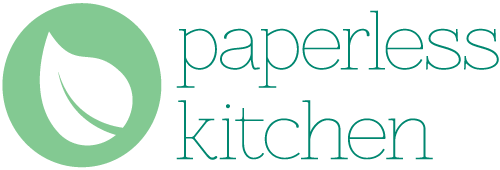PaperlessKitchen Blog
Paperless Kitchen Tested: thinkBaby Bento Box
Recently, I reviewed the thinkBaby Kids Cup, a product that we recently added as a part of our Back to School collection. I'm back this time with the thinkBaby Bento...
Paperless Kitchen Tested: thinkBaby Bento Box
Recently, I reviewed the thinkBaby Kids Cup, a product that we recently added as a part of our Back to School collection. I'm back this time with the thinkBaby Bento...
Paperless Insurance Cards
Have you seen that commercial where the pig is pulled over for having a broken taillight? When I first saw that commercial, I didn't pay attention to the pig or...
Paperless Insurance Cards
Have you seen that commercial where the pig is pulled over for having a broken taillight? When I first saw that commercial, I didn't pay attention to the pig or...
Paperless Kitchen Tested: thinkBaby BPA Free Ki...
As a part of introducing our Back to School collection on Paperless Kitchen, I've spent some time investigating some of our newer products. First up is the thinkBaby BPA Free...
Paperless Kitchen Tested: thinkBaby BPA Free Ki...
As a part of introducing our Back to School collection on Paperless Kitchen, I've spent some time investigating some of our newer products. First up is the thinkBaby BPA Free...
New Stats Show Europe Is Making Progress on Pap...
In the past, we've covered the massive problem of plastic waste in the European Union, and while Europe is still trying to sort out the best ways to reduce the...
New Stats Show Europe Is Making Progress on Pap...
In the past, we've covered the massive problem of plastic waste in the European Union, and while Europe is still trying to sort out the best ways to reduce the...
Free Tool Helps You Select the Most Eco-Friendl...
Even if you're committed to reducing paper usage as much as possible, it's not always possible to eliminate paper completely. If paper must continue to play a role in your...
Free Tool Helps You Select the Most Eco-Friendl...
Even if you're committed to reducing paper usage as much as possible, it's not always possible to eliminate paper completely. If paper must continue to play a role in your...
Your Business Can Turn Waste Paper Into Toilet ...
Although it was released 2 years ago, the White Goat paper-recycling machine has made headlines again recently, as more and more companies in Japan are purchasing these systems. The...
Your Business Can Turn Waste Paper Into Toilet ...
Although it was released 2 years ago, the White Goat paper-recycling machine has made headlines again recently, as more and more companies in Japan are purchasing these systems. The...
